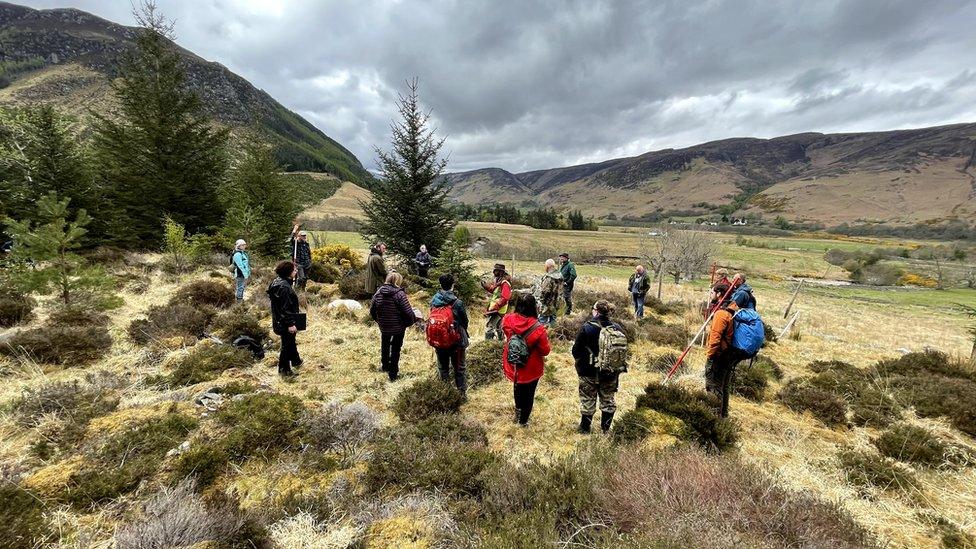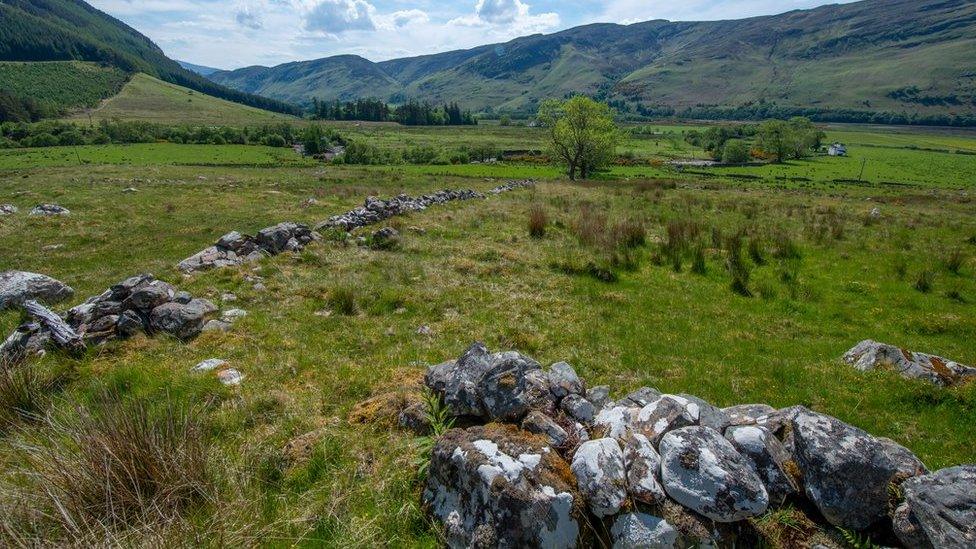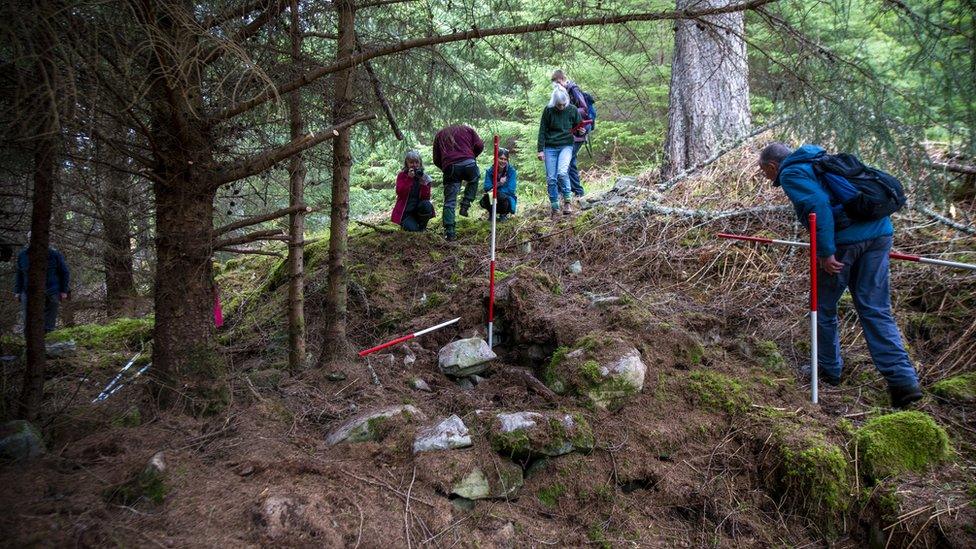Archaeological dig at 'brutal' Highland Clearances sites
- Published

A two-year community project aims to add more detail to what little is currently known of Inverlael and Balblair
Archaeological digs have started at the sites of two Highlands townships cleared of all their residents by a landowner 200 years ago.
Dozens of families were forced to leave Inverlael and Balblair, near Ullapool, so the land could be turned over to sheep farming.
Ullapool Museum, which is leading the two-year community project, described the evictions as "brutal".
They came during the wider Highland Clearances.
The clearances saw hundreds of families moved off land by landowners to make way for large-scale sheep production or other agricultural uses.
Some families moved to other parts of Scotland, while others emigrated - many to Canada where their hardships continued.
Evictions could be violent, and communities were forced to give up homes and land where generations of people had lived and worked.
Landowner Sir George Steuart MacKenzie began clearing Inverlael and Balblair in the winter of 1819-20.
Stone from homes and beehive-shaped shelters called shielings are still visible in the area, some of which was later planted with trees.

The evictions near Ullapool in Wester Ross were completed within about five years

Some of the land where people had lived and worked since the 13th Century has been turned to forestry
Ullapool Museum said little was known of the "lost" communities, which were cleared within about five years.
The museum said historical records dated Inverlael to at least the 13th Century and, until the establishment of the village of Ullapool in 1788, it was described as "the largest settlement north of Dingwall".
As well as the archaeological excavations, which have involved Ullapool High School pupils, the project is examining archives for information on the townships.
Museum volunteers have been "painstakingly" gathering family genealogies for the past 20 years, which the new project will draw on.
But most of the little information that is known of the townships has been "preserved through oral tradition handed down through generation of local families", said the museum.
Project coordinator Helen Avenell said the hope was to find out who lived in the area and for how long.